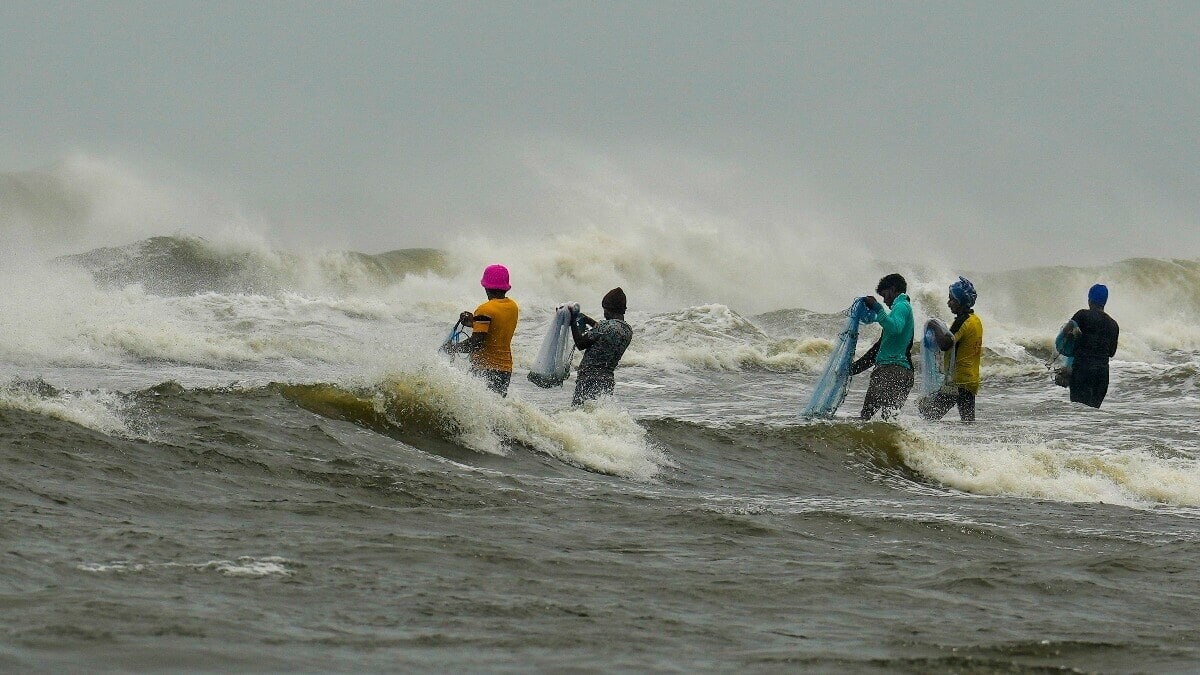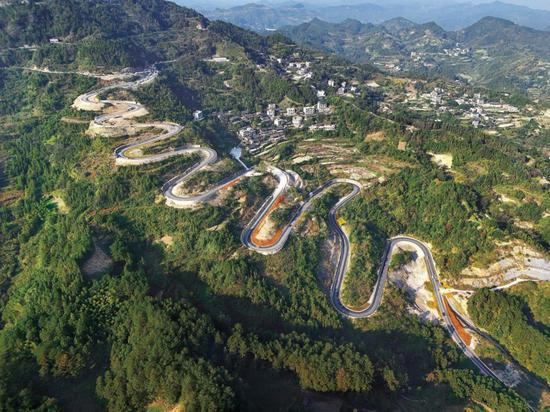
Derek Johnson remembers the day his then-five-year-old son planting the English oak from an acorn on his picturesque block in the Perth hills 50 years ago. His son is now in his 50s, and that English oak grew into a towering presence in Johnson’s front yard, alongside avocado, box elder maple and mulberry trees he also planted 40 years ago. On November 22, all four of those trees were reduced to nothing within two hours.
Johnson’s property is one of more than 1400 in metropolitan Perth that have been visited by tree loppers as the state grapples with one of the most destructive pests to breach Australia’s strict biosecurity controls – the polyphagous shot-hole borer. Looking on as his avocado tree is mulched, Johnson recalls fondly how every season they would have more fruit than they needed, so they would place buckets on his verge – much to the delight of his neighbours. “It’s extraordinarily sad, I’m more concerned about the avocado.

It was such a productive tree, and that’s pretty devastating,” he said. The state and federal government continue to work toward eradication over fears the bug could cross the Nullarbor. Johnson wants the government to find a cure for the borer rather than the destructive eradication method that has seen more than 3800 trees felled.
He fears what will happen to the acres of trees if the bug pushes any further into Perth’s fruit-growing regions. Johnson’s concerns are shared by a growing number of arborists, and even Perth councils, who want the government to save infected trees through similar approaches to other infested parts of the world where the borer is rampant, like California, which uses pruning and chemicals to manage the pest. The polyphagous shot-hole borer is about the size of a sesame seed, but if it finds a tree it likes it can rapidly multiply, growing from just a few beetles, to hundreds, to thousands in a short time.
Exactly how it made its way into Perth from its native South East Asia remains a mystery, but it was first detected in August 2021 in Fremantle, so one commonly held theory is that it was a stowaway on a ship docked in the port. The borer itself isn’t what kills the tree, it’s the fungus that it farms inside the tree to then consume that restricts the flow of nutrients that eventually spells the end – first branches, then the entire tree itself. Department of Primary Industries and Regional Development chief plant biosecurity officer Vincent Lanoiselet said what they had observed so far – which was consistent with other infestations in California and South Africa – was the borer liked healthy foreign trees.
“The more the tree is healthy, the more the fungus is going to grow and thrive and therefore that’s going to sustain a heavy population of the borer,” he said. Lanoiselet said this was why infestations were rampant in some of Perth’s lushest gardens and parks – like Perth Zoo, Kings Park and Hyde Park – and in waterside locations like on the shores of the Swan River. He said the borer’s main impact was on Perth’s urban tree canopy but, from time to time, it had been detected in commercial fruit trees like citrus and avocado.
A lot was at risk if the borer marched east. “These borer affect native fig trees, for example the Port Jackson fig trees, the Moreton Bay fig trees, so obviously ..
. northern New South Wales, Queensland would have a lot to lose,” Lanoiselet said. Every morning, hundreds of tree inspectors gather at Claremont Showgrounds in Perth’s west, clad in high-vis, armed with binoculars and laminated information cards slung around their necks, ready for their gravely important task – to stop the borer.
More than 3000 surveillance traps are out in quarantine area that covers the entire Perth metropolitan area. There are also traps set in the Mid West, Wheatbelt, South West and Great Southern regions, where the borer has not been detected to date. Those quarantine areas restrict the movement of wood out of the city.
Anyone caught doing the wrong thing could face fines, but DPIRD’s shothole borer incident controller Dave Griffiths said that had not been necessary yet. “However, we are vigilant, and do undertake inspections throughout the quarantine area, and also monitor waste sites regularly to ensure that people are complying with the quarantine requirements,” he said. Technically, the borer response is being led by the Commonwealth, but DPIRD and the WA government are tasked with leading the effort on the ground.
The response funding has been spent on public communications campaigns and the 190 surveillance officers who traverse Perth daily to find evidence of the borer and set the traps. Many Perth local governments also stump up funding for their own borer teams. This masthead trailed a pair of inspectors operating in a park in Kelmscott last week, who explained they hit about 10 properties a day.
Aside from the obvious holes, they look for dying branches, peeling bark and little wooden noodles called “frass” protruding from the hole, which suggests the borer has been active recently. If they spot the borer, they log it in an app which alerts the biosecurity response centre, leading to further lab tests of the beetle and tree. Despite these resources, Griffiths said his team still relied on the community’s eyes and ears.
“We are really reliant on the community’s support in eradicating [the borer] one easy way that people can help us is to look out for signs of [the borer] within trees, either in their yard or in their local area,” he said. For some in the community, the government’s current seek-and-destroy response is too pigheaded, and the fear it will smash the city’s already depleted urban canopy or risk livelihoods if an orchardist is unlucky enough to get a borer. Johnson said apart from the dead bits, his avocado tree was free of borer, but he was still forced to remove the tree entirely.
He was concerned about the impact this method could have on commercial fruit growers. “I wouldn’t want to see it get out to ..
. where they’re making a living off avocados, and there are acres and acres out there,” he said. “To me, one tree sacrifice, OK, I’ve got over the devastation of it, and that’s OK.
I can survive. “The orchards wouldn’t survive; they would wipe them all out. “I’d like to see them find a cure .
.. they need to experiment.
They need to find out what’s causing the problem and see if they can cure it.” Johnson’s view is shared by some in local government, including the City of Perth which has managed to deviate from DPIRD’s plan slightly and is using a pruning and chemical treatment method on some of its larger trees. Earlier this week, the city cut infested limbs down on one of the biggest fig trees in the CBD, behind its own council house, and painted parts of it with chemicals that resemble fluoro paint.
This is the method adopted in countries where the borer has run rampant. Disneyland in Anaheim, California famously deployed one of the world’s most effective responses, which saw the borer population in the park plummet. University of California Davis Assistant Professor of Forest Pathology Shannon Lynch also spruiked the pruning and chemical method during a talk in Perth about the borer in September.
She said good tree sanitation, which meant removing infected branches quickly, saw the beetle being managed – particularly in avocado farms. WA Horticulturalist Trevor Cochrane pointed to the California response as the path forward. “California uses integrated pest management, a combination of fungicides and pesticides and also removing some trees that are badly infested,” he said.
“You cannot understand the enormous impact it’s going to have on the landscape in the Perth metro area if we adhere to the policy of removing all the trees.” The state recently launched a research initiative offering $2 million to kickstart studies into borer-related fields, including the use of chemicals. However, Lanoiselet said according to their most current information, tree removal or pruning was their only tool when it came to the eradication goal.
“On top of consulting with international experts, we are also consulting with Australian researchers and, unfortunately, at the moment, the only tool we have in the toolbox is early detection and removal of the infested part of the tree, or removal of the whole tree, and that’s required to protect the trees that are nearby,” he said Speaking in Kelmscott, where DPIRD had removed three infested coral trees a few months ago, Lanoiselet said traps in the area had not detected the borer again, which proved the eradication method could work. Griffiths said experts believed WA could still get on top of the borer. “It is still feasible to eradicate polyphagous shot-hole borer from Western Australia,” he said.
.










